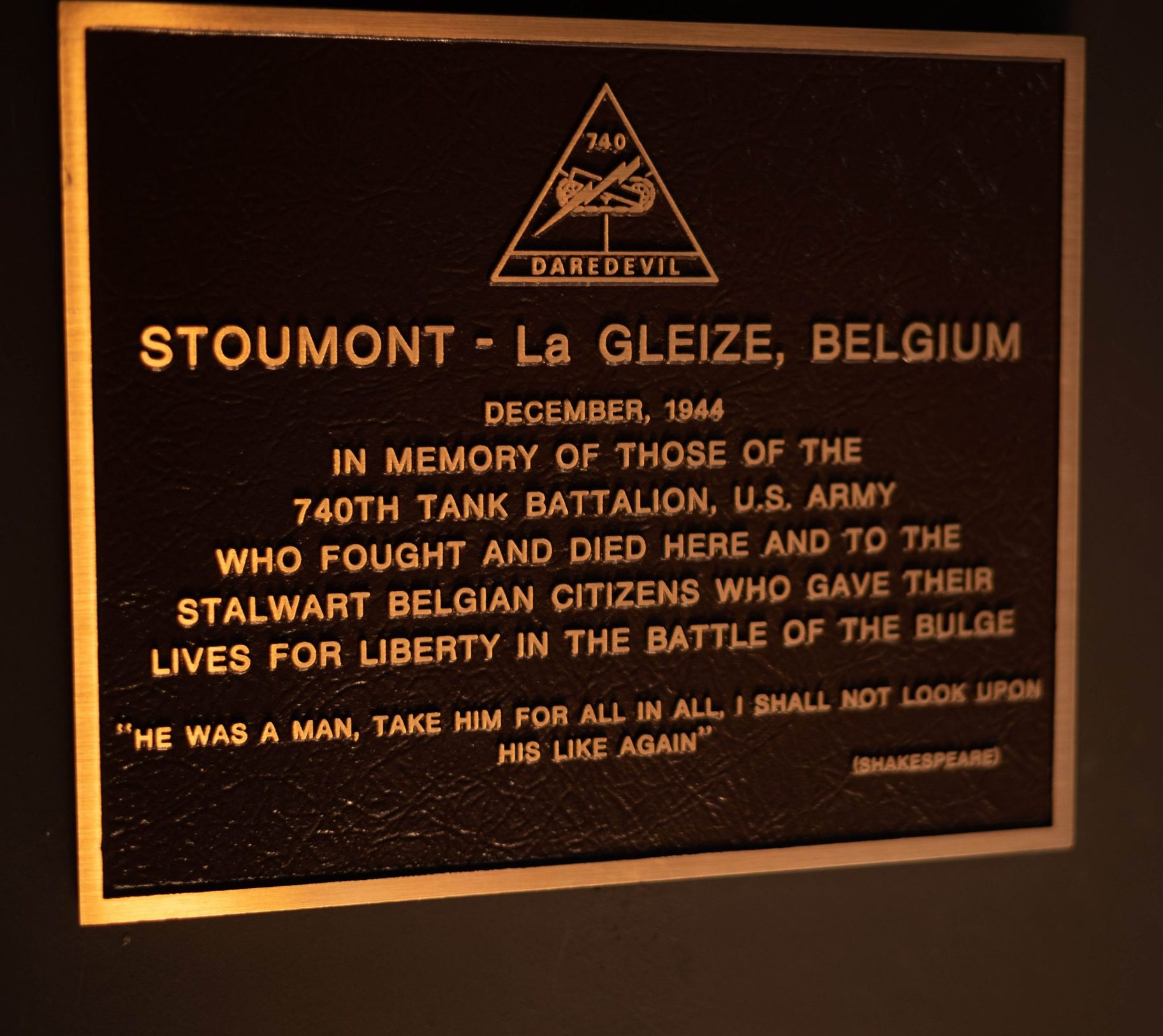
The December 44 Museum, located in La Gleize in the commune of Stoumont, houses collections of more than 5,000 military objects relating to the Battle of the Bulge. Indeed, it gathers one of the most important stocks of military material and objects of everyday life belonging to American and German soldiers. There are also various testimonies. In particular, the following:
The Saint-Edouard House was home to 150 girls. It was a preventorium, a treatment facility for those who had contracted tuberculosis. The girls, accompanied by the nuns, the educators, and the neighbors, lived in the cellars of the building. On the third day of the offensive battle at Stoumont, on December 22 1944, the cellars welcomed more guests. Wounded German and American soldiers were all in the cellars together. An injured German offered a cigarette to the wounded American next to him, who looked especially bad. The American pulled out a small packet of chocolate to give to the German soldier in exchange. The German soldier accepted it in recognition of the generous gesture of his enemy. But the German soldier pointed out to the priest who was observing them, “I can’t eat it. It’s covered with blood.”
Abbot C. Hanlet. The Tragedy of the Saint-Edouard House in Stoumont, Ed. H. Dessaine Editeur Liège, 1945, p.9 and 10.
“Staying in Saint-Edouard, Marie Gabriel was six years old. Orphaned since the age of three, she lived in Saint-Edouard with all the other children of the colony. On December 22, the Americans took control of Saint-Edouard and evacuated the refugees. They had to cross the fields to reach the trucks parked on the road to take them to Lorcé. The terrain was rugged. Marie lost her shoe and sock. An American soldier took her in his arms and put one of his socks on her. Socks were very precious, even vital for a soldier in the middle of winter.
Many years later, in 1994, the commune received a group of American veterans and shared a meal at Saint-Edouard. An American soldier spoke up and asked if anyone knew the little girl he had given his sock to many years before. Marie then stood up. She had prepared a pair of khaki socks, wrapped in a beautiful American flag on which she had pasted an enlarged photo of a group of children from Saint-Edouard. “And I gave him back his sock with great fanfare…” The American soldier’s name was Gerald Posner, and he was a doctor in Louisiana.”
Yves BASTIN, “La Meuse-La Lanterne,” Tuesday, December 20, 1994; p.11.
The diary of Father Ernest Natalis, a village schoolteacher:
“At the home of Doctor Robinson, who lived in one of the houses to the northeast of the village, there had taken refuge a dozen neighbors and thirty American soldiers. The Germans discovered them. They were all forced to leave the house and line up in front of it. They were very worried, the family members and the soldiers.
Dr. Robinson recounted, “Along came their leader, Joachim Peiper. That was the most dramatic moment of the day. When he heard that I was a doctor, he ordered me to go to a tank because there were wounded. Father Natalis had heard what the SS said because he spoke German well, that all the people of Stoumont were terrorists. The teacher played his trump card. “Sir,” he said, “you are a career officer, but do you know the character of the people in this area?”
The teacher opened his diary to the date of January 21, 1944. He found a diagram of a plane. One part was the fuselage, and the other parts were scattered in the forest. He explained that a German aircraft that had taken off from Bremen to Chievres had crashed in the woods north of Stoumont. “And it was the people of Stoumont who saved as many soldiers as they could. Our people are human. They are not terrorists. Joachim Peiper paused, and then he bowed slightly. He gave the order to do nothing to the people of Stoumont who were gathered below the church.”
John S.D. Eisenhower, son of the Supreme Allied Commander, The Bitter Woods, published in New York, 1969. – René ROBINSON, Autobiography, 1981
“Froidcour Castle served as an infirmary and prison camp. The suffering was atrocious on both the German and American sides. A German, the father of five children, called Monsieur de Harenne, who spoke German, and gave him his wallet. He said, “I am Catholic. Will you say the dying man’s prayer with me and tell my wife after the war? You have my wallet.”
Battle of the Bulge. Von Rundstedt offensive 1944-1945. Diary of Marie-Louise Martin.
Do you have information about events experienced by your family during the world wars? By sharing your story, you will enrich our “Drawing inspiration from heroes” section.